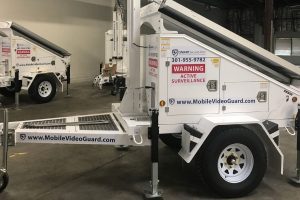Inventory loss cost the American retail industry over $48 billion in 2016.
Loss of inventory can be the result of shoplifting, employee theft, as well as other factors. Besides having a proper inventory management process, preventing retail theft can be accomplished in many cost-effective and efficient ways.
Whether you’re a small retail business or you’re running a large operation that carries a lot of inventory, retail theft is likely costing you money. You need to find a way to stop it. This can be achieved with low-cost initiatives as well as more long-term investments.
Keep reading to find out the best methods for preventing retail theft from your business.
Who is Responsible for Inventory Loss?
There are three ways that inventory loss occurs: shoplifting by customers, theft by employees, and other sources.
Shoplifting
About 38% of inventory loss comes from customers who shoplift. While many of these shoplifters act on impulse and take items for their own personal benefit, others take items to resell them.
In the US, the most shoplifted items include chewing gum, over-the-counter drugs, cell phones, cosmetics, and deodorant. If you carry any of these items, be extra vigilant.
Employee Theft
Employee theft is a top concern for people trying to reduce retail theft. It accounts for 30% of inventory loss in the average retail setting.
Employees steal for different reasons. Sometimes it’s for personal benefit, other times it’s to give friends or family a discount. They may also be unhappy employees that use this as a way to get revenge.
Suppliers, Contractors, Management, and Administration
The final way inventory is lost in retail is through suppliers and contractors as well as administrative errors. This accounts for approximately 34% of inventory loss.
Checking that suppliers and contractors are delivering the services and products they’ve charged you for is one way to counter this. Ensuring that you’re not being overcharged is another. Keeping contracts with your suppliers and contractors can reduce these risks.
An administrative error can also contribute to inventory loss. Mistakes like ordering too much product, mispricing inventory, or mismanaging inventory, can contribute to loss of this form.
How to Prevent Losses from Retail Theft
Depending on the size of your retail business and your budget, there are different options available to you. Preventing retail theft can be as easy and inexpensive as installing signs or as long-term as investing in a video surveillance program.
Below, we’ll discuss all the ways in which you can prevent retail theft.
Insurance
Call your insurance provider and ensure that losses from crime are covered in your policy. This can offset the costs of inventory loss from shoplifting.
Understand Shoplifting Behavior
There’s no way to identify shoplifters based on their age, gender, or ethnicity. But there are ways to identify the common behaviors of shoplifters.
Keep an eye out for customers who are constantly watching your cashiers or employees on the floor. They’re likely waiting for them to look away so they can shoplift an item without being seen.
Customers who take a large number of items into a dressing room should also be monitored. That’s especially true if they only leave with 1 of those items at a time.
When customers act nervous or don’t pay attention to the items they’re looking at, this is suspicious behavior.
Shoplifters sometimes work in teams. Be mindful of customers that come in together and split up. One will be tasked with distracting your employees while the other shoplifts.
Shoplifters can hide stolen inventory in clothing, purses and other bags, strollers, umbrellas, as well as merchandise they’ve already purchased.
Understand Other Methods of Theft
Another common way in which shoplifters steal is to switch the pricing label of items. They find a less expensive item then the one they’re purchasing and switch the labels for the less expensive price.
You should also be aware of false returns. While not considered shoplifting, this is still a loss to your inventory that can be prevented.
A false return is when a customer purchases an item, uses the item, and then returns it for their money back. If you’re unable to resell that item, this will cost you money.
Implement Policies
Implementing a few simple policies can reduce the chances that customers can shoplift.
Use a dressing room policy. Limit the number of items that can be taken into a dressing room. Have an employee responsible for managing the dressing rooms at all times.
Don’t allow customers to bring large bags into the store. You can keep large bags and previously purchased merchandise in a designated area.
Have a greeting policy. If your employees greet every customer that comes into the store, potential shoplifters will know that employees are paying attention and aware of their presence.
You should also have a code for suspicious behavior. Employees can alert each other using this code when they notice something suspicious.
Engage Your Employees
Make sure that your employees understand common shoplifting behavior and methods. They should also be ensuring that any policies are strictly enforced.
Always have enough employees on the floor. This will change according to the time of day and the day of the week. Weekends tend to require more staff whereas daytimes during the week are likely less busy.
Make sure that employees know they don’t have to approach a shoplifter and put themselves in any danger. Usually, approaching a suspicious customer and asking if they need help is enough to deter them.
When the situation calls for it, employees should involve a manager or police.
Store Organization
Disorganized, messy, and overcrowded stores are easier to steal from. It’s more difficult to tell when inventory has gone missing. It’s also more difficult to identify suspicious activity.
Your store layout should be open. You should be able to see most of the inventory from any place in the store. This means keeping displays low so visibility isn’t divided.
If you carry expensive items, these can be locked behind cabinets. Smaller items or items that are stolen more often can be kept closer to the cashier for extra visibility.
Customers should have to walk by the cashier on their way out of the store. Position your cashiers close to the door. Cashiers should be able to see the entire store layout.
Keep all of your inventory close to the front of shelves. This makes it easier to identify when something goes missing.
Have adequate lighting in all areas of the store and install security mirrors. This will help you see into areas that are more secluded and less visible.
Use RFID Tags
RFID tags come in two types. There are sticker tags as well as tags that pin to items. Both are radio-frequency identification devices that set off an alarm when they’re not removed before leaving the store.
These tags can be bought new or refurbished. Both do the trick but refurbished will be less of an investment.
You may not even need RFID tags on all items. You can choose to place them on items that are stolen more often or those that carry a higher price tag.
Install Shoplifting Signs
Shoplifting signs are both a deterrent and a legal requirement. If you catch a shoplifter and intend to charge them with their crime, you must have signs posted to take legal action.
The best places for shoplifting signs are:
- Near the front door where shoppers will look
- Up high where shoplifters would look for security cameras
- In places that won’t make your regular shoppers uncomfortable
Your shoplifting signs should act as deterrents. Using eyes on your signs can have a big impact on potential shoplifters. But the language should also reflect your company culture and brand.
Hire Security
If it’s within your budget, consider hiring a security guard. Security guards can be a helpful measure during your peak business hours.
Having a security guard in uniform is a visual deterrent for shoplifters. You can also hire security guards that wear plain clothes and blend in with your customers. These security guards are trained to spot suspicious activity and are able to catch many shoplifters in the act.
Security guards typically cost between $15 and $65 an hour, depending on whether or not they’re armed and their level of experience. An off duty or prior police officer is going to cost much more than an entry level unarmed security officer.
Install a Security System
There are three types of security systems that reduce retail theft: a fake system, a video security system, and a video analytics system.
A fake security system is exactly what it sounds like. It involves installing fake video cameras around the store to act as deterrents. This is an inexpensive option that can stop potential shoplifters from stealing.
A video security system is a system of video cameras installed around your store, or in strategic places. Using these, you can watch customers and employees. You can catch potential shoplifting in the act and review the tapes when something has gone missing.
Video security systems are also a visual deterrent. Their price ranges depending on how advanced the system is.
A basic video security system offers a lot of benefits without requiring a significant investment. A monitored security system will cost a bit more. But these give you the peace of mind that someone is always watching.
Are You Losing Money to Retail Theft?
Retail theft goes beyond shoplifting. You can also be losing inventory to employees, contractors, suppliers, and management error. With the right retail theft prevention measures, you can reduce the amount of money you lose to inventory shrinkage.
Understanding shoplifting behavior, training employees, and installing signage are simple ways to prevent retail theft. If you’re carrying a larger, more expensive inventory, you may want to consider investing in measures such as a security guard or a video monitoring system
Contact us for more information on how a monitored security system can save you money in the long-term.




















